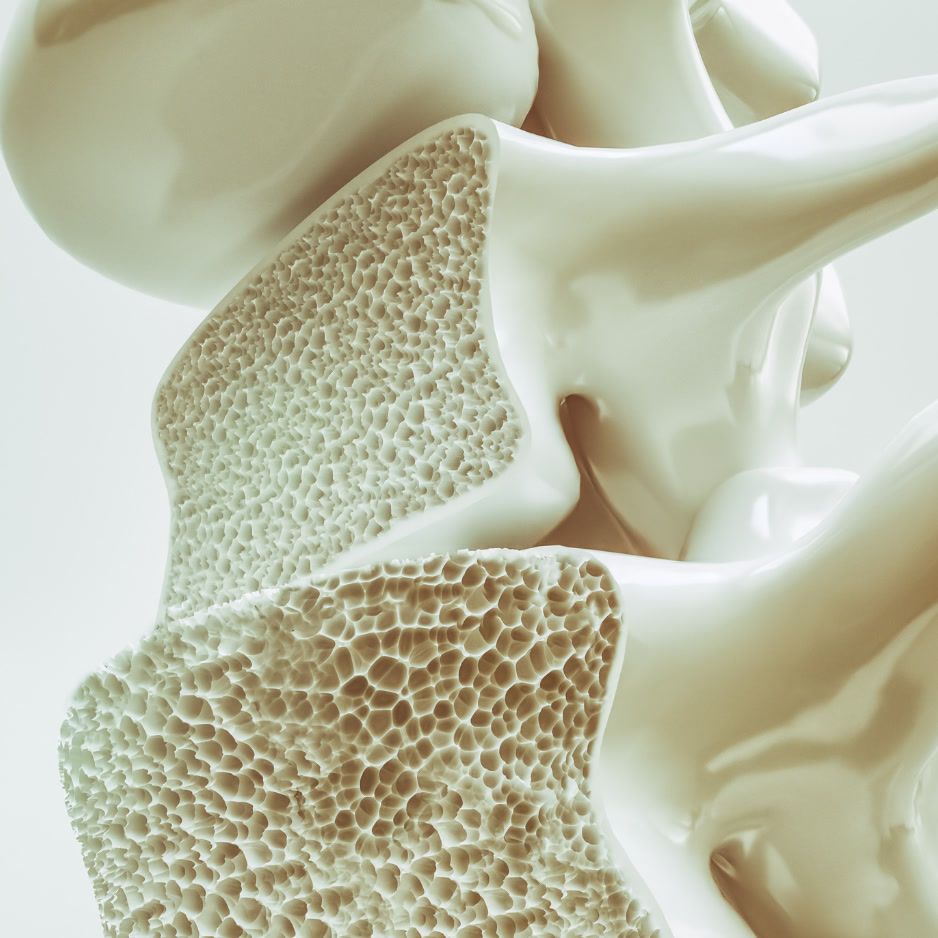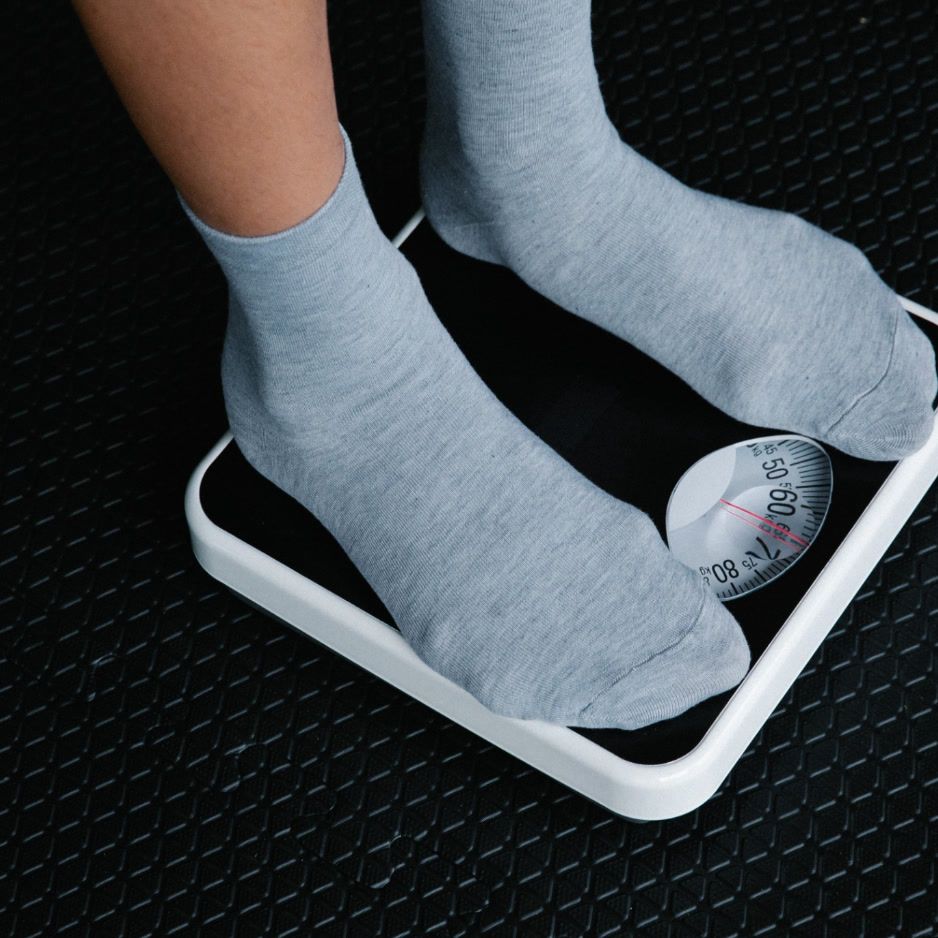IBS and Weight Loss: Causes, Red Flags & Safe Strategies
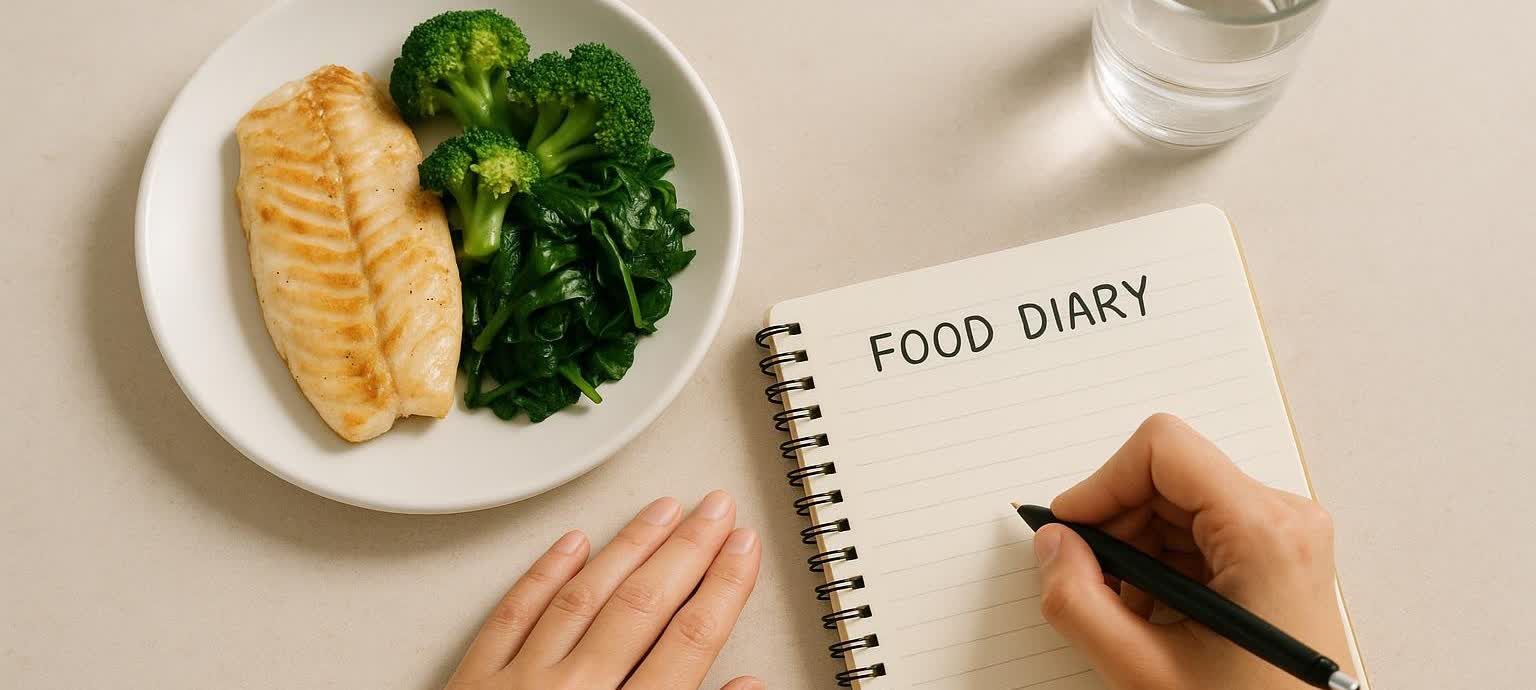
IBS and Weight Loss: Causes, Red Flags & Safe Strategies
If you’ve noticed the scale dropping while you’re battling IBS symptoms—or you’re trying to lose weight without triggering flare-ups—you’re not alone. IBS itself doesn’t directly cause weight loss, and clinical guidance notes that weight loss or bleeding are warning signs that warrant medical evaluation. When weight changes do occur with IBS, they’re usually indirect—driven by food avoidance, skipped meals, or stress-related appetite changes rather than the condition itself, as outlined in the American College of Gastroenterology’s patient overview of IBS and Everyday Health's guide to IBS and weight loss.
This guide explains why weight can shift with IBS, which symptoms are red flags, and how to create an IBS-friendly plan for losing or regaining weight—without constant flare-ups.
Does IBS cause weight loss?
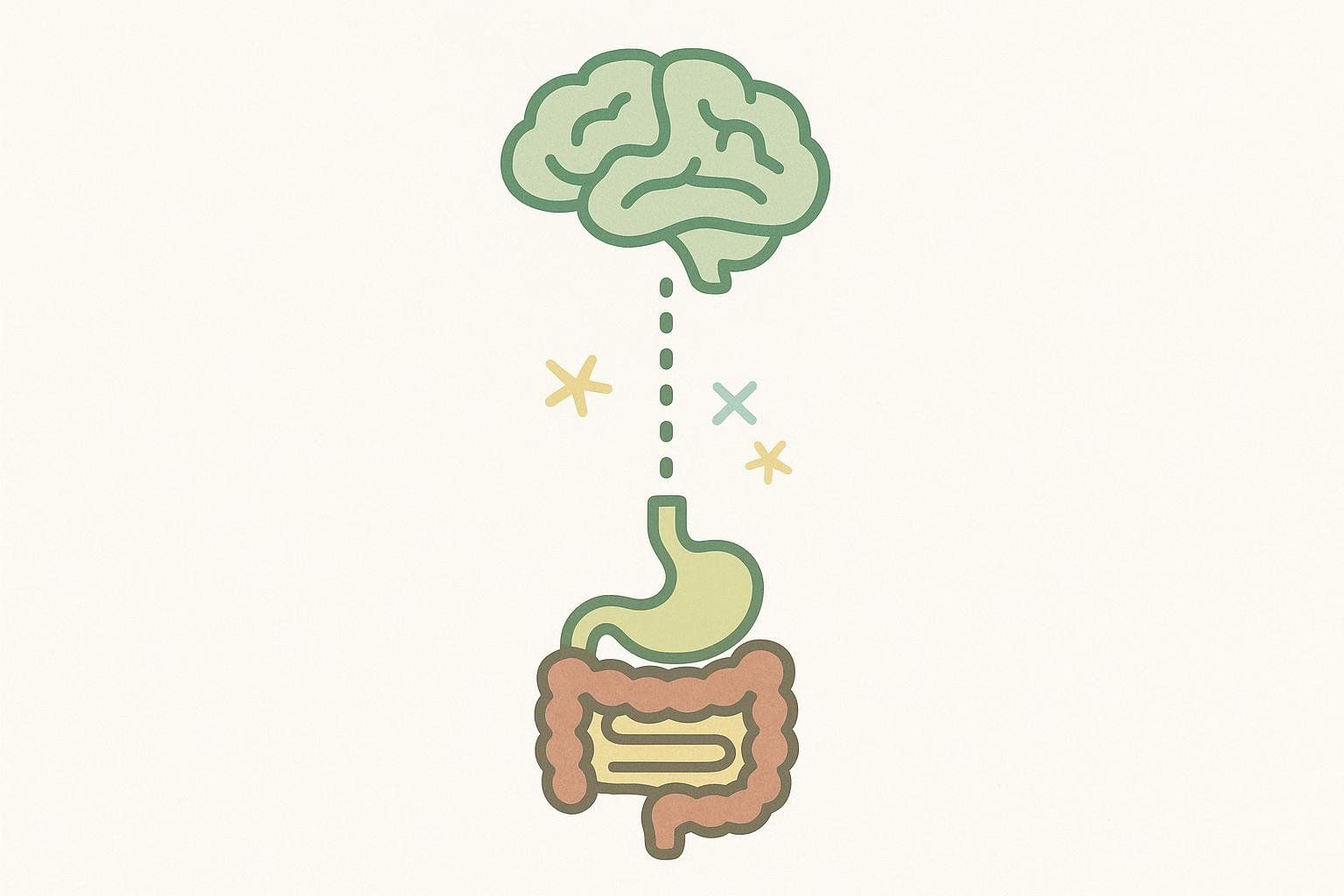
Short version: Not directly. IBS is a functional gut–brain disorder—your digestive tract looks normal but doesn’t always work smoothly. Hallmark symptoms include abdominal pain plus changes in bowel habits (IBS-D, IBS-C, or mixed), gas, and bloating, per the Cleveland Clinic’s overview of IBS. Clinical guidance from the American College of Gastroenterology and Johns Hopkins Medicine’s IBS overview emphasizes that unexplained weight loss is not typical of IBS and should prompt evaluation to rule out other conditions.
So why do some people with IBS lose weight?
- Food fear and restriction: Avoiding many foods (or entire meals) to prevent flares can create an unintended calorie deficit, as noted by Everyday Health.
- Appetite changes from pain and anxiety: The gut–brain axis means stress can dampen appetite and worsen symptoms (as Everyday Health explains; see also the Cleveland Clinic’s IBS overview).
- Symptom-driven routines: Diarrhea, urgency, or bloating can push people to eat less, skip fiber, or avoid eating before leaving home—lowering overall intake, according to NHS diet and lifestyle guidance for IBS.
Conversely, others struggle to lose weight with IBS because many “healthy” foods (beans, certain fruits/veg, wheat, dairy) can trigger symptoms, making it tempting to rely on lower-fiber, ultra-processed “safe” foods (see Verywell Health’s guide to losing weight with IBS).
Red-flag symptoms: when to call your clinician

Seek prompt medical advice if you experience any of the following:
- Unexplained weight loss
- Blood in the stool or rectal bleeding
- Iron-deficiency anemia
- Fever, persistent vomiting
- Pain or diarrhea that wakes you from sleep
- New-onset symptoms after age 50
These signs may indicate something other than IBS and deserve timely evaluation. Health authorities like Johns Hopkins Medicine, the American College of Gastroenterology, and the NHS highlight these red flags.
How IBS subtypes can nudge weight up or down

- IBS-D (diarrhea-predominant): Fear of urgency can reduce appetite or lead to skipped meals; persistent diarrhea can cause dehydration and electrolyte loss, which sometimes shows up as lower scale weight without actual fat loss, per the Cleveland Clinic’s IBS overview.
- IBS-C (constipation-predominant): Bloating and delayed transit can suppress appetite; people may avoid fiber due to fear of gas, even though soluble fiber actually helps, per NHS diet and lifestyle guidance for IBS.
- IBS-M (mixed): Symptom swings make routine difficult, and inconsistent intake can drive weight fluctuations.
Key idea: Stabilize symptoms first. Then target your weight goal (loss or regain) with foods you tolerate.
Your IBS weight-management plan (without constant flare-ups)
Think “symptom control first, then body-weight goal.” The steps below are safe starting points you can tailor with a registered dietitian.
1) Personalize your trigger list using a structured low-FODMAP process
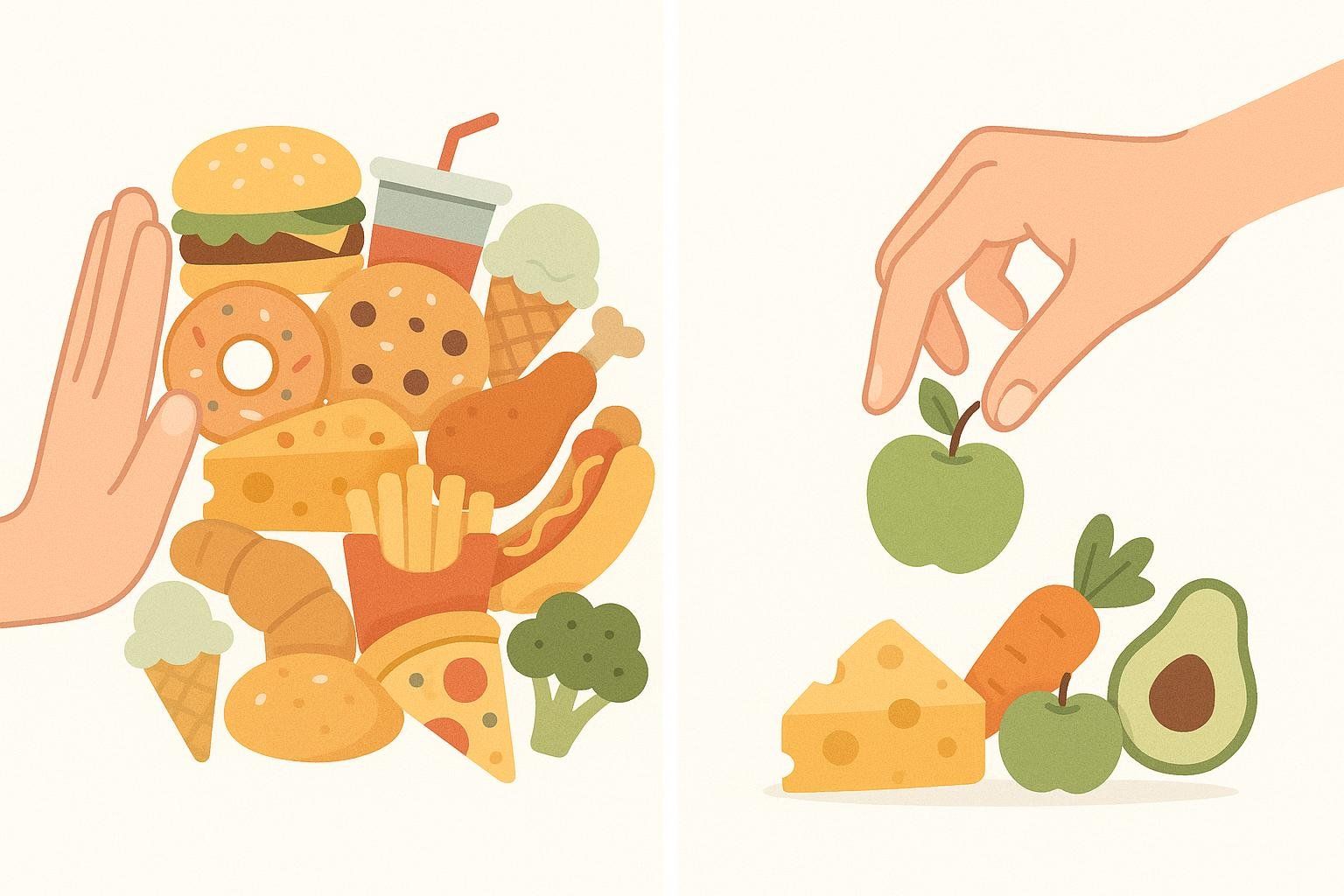
- The low-FODMAP diet is a short-term elimination followed by systematic reintroduction to identify personal triggers. Do this with guidance to avoid unnecessary restriction and nutrient gaps (Everyday Health's guide to IBS and weight loss; the Cleveland Clinic’s IBS overview).
- Don’t stay in elimination long-term; the goal is to expand your menu as much as possible.
Helpful BodySpec Reads
- Prebiotics vs. probiotics and how to introduce them strategically: Prebiotic vs Probiotic: Gut Health Guide
- Broad microbiome fundamentals: Gut Health Guide: How to Improve Your Microbiome
2) Dial in fiber—match type and dose to your subtype
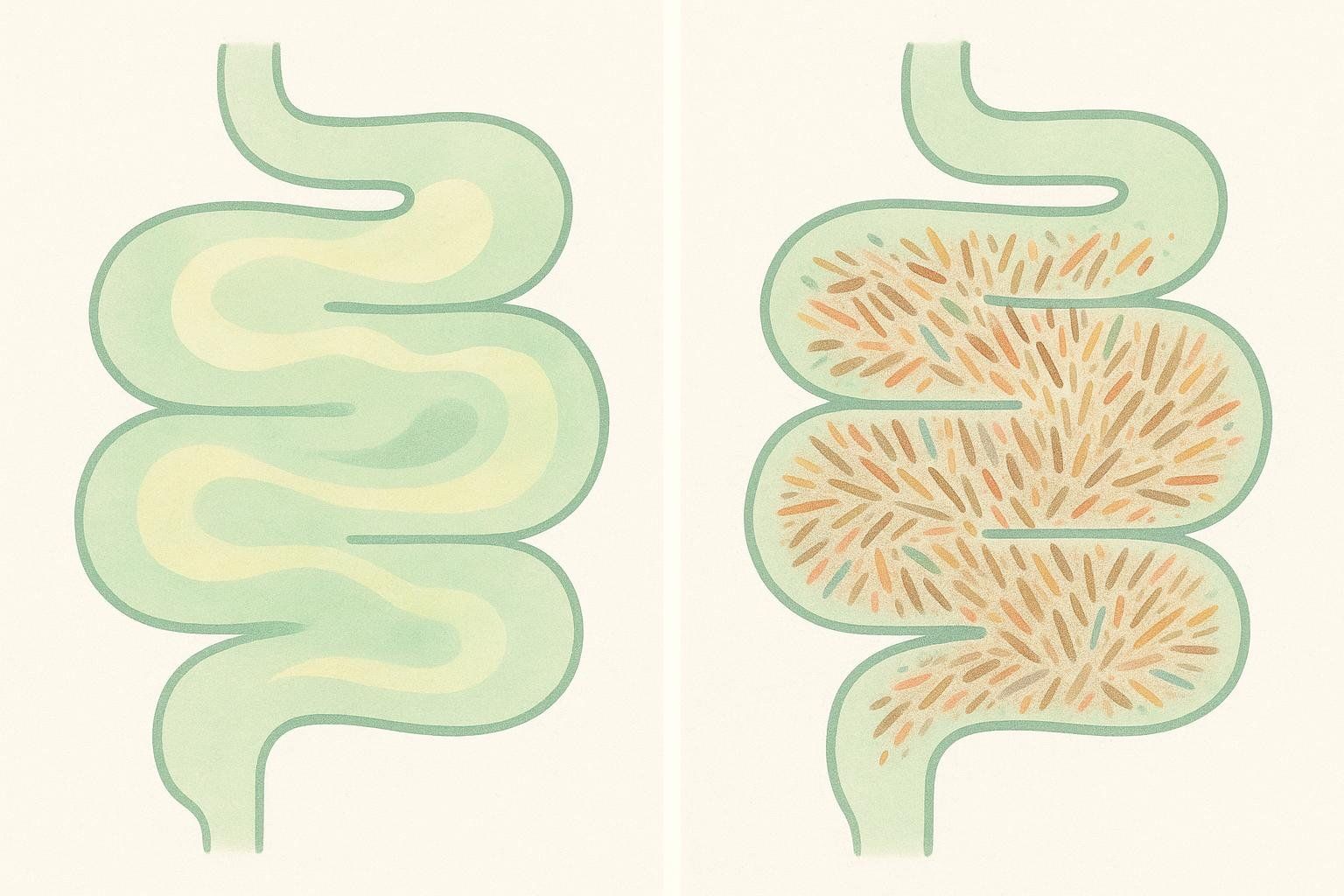
- For IBS-C:
- Increase fluids and soluble fiber (e.g., oats, psyllium, linseeds/flax, peeled potatoes).
- Ramp up fiber intake slowly to minimize gas.
- The NHS specifically recommends soluble fiber and adequate hydration for constipation relief (NHS diet and lifestyle guidance for IBS).
- For IBS-D: Temporarily reduce insoluble fiber (e.g., bran, large amounts of whole grains/nuts/seeds) during flares; reintroduce as tolerated. NHS guidance notes reducing some high-fiber foods can help diarrhea, while maintaining hydration is essential (NHS guidance on IBS).
Planning fiber for weight goals? See: How Much Fiber Per Day to Lose Weight?
3) Center meals on IBS-friendly proteins and tolerated produce
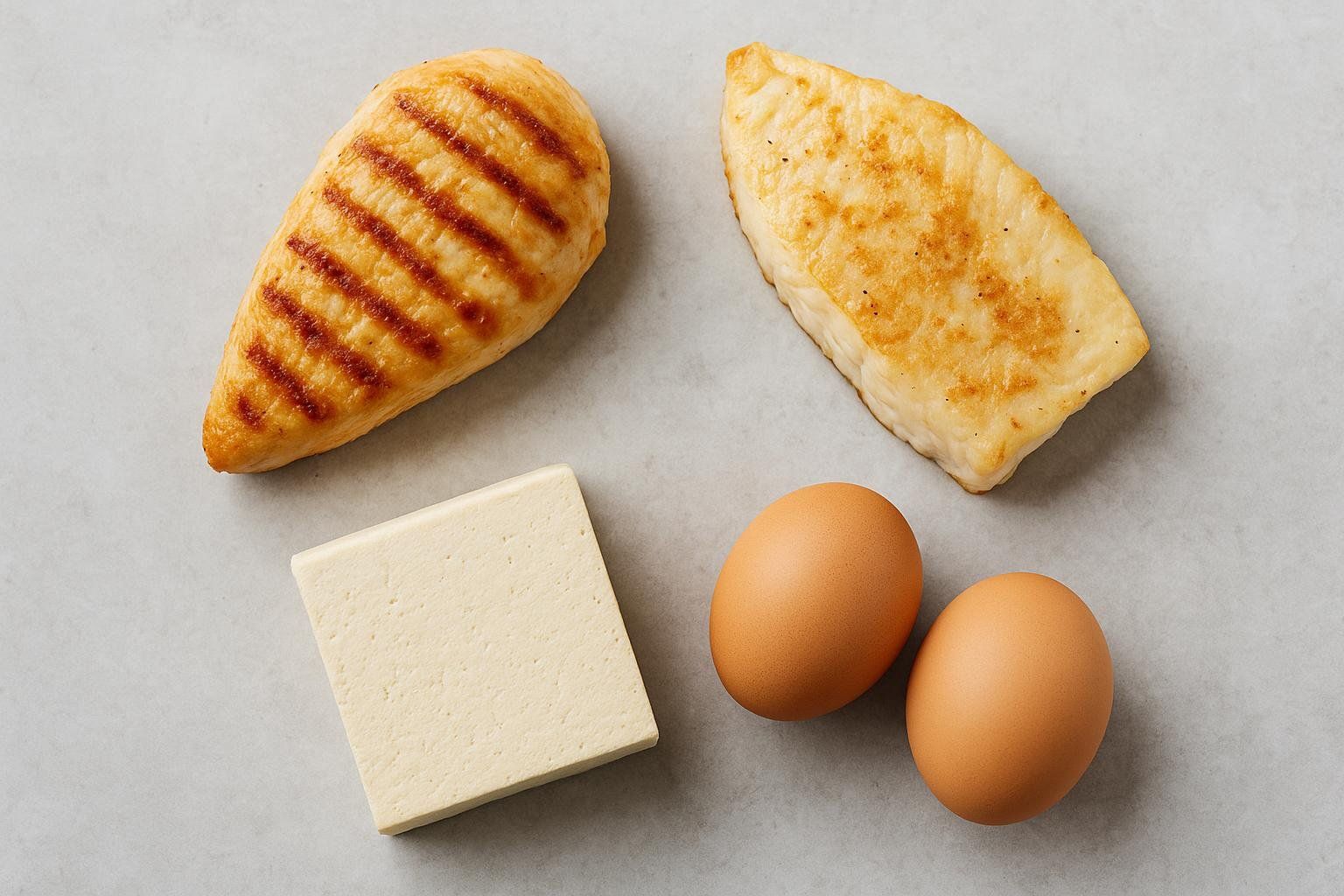
- Lean proteins are usually well tolerated and increase satiety: eggs, poultry, fish, firm tofu/tempeh, lactose-free yogurt. Many people also do fine with small portions of low-FODMAP legumes like canned lentils (rinsed). Pair with low-FODMAP produce (e.g., carrots, bell peppers, zucchini, kale, potatoes, tomatoes, blueberries, grapes) to hit micronutrient needs (see Verywell Health’s guide to losing weight with IBS).
4) Use meal timing that calms symptoms
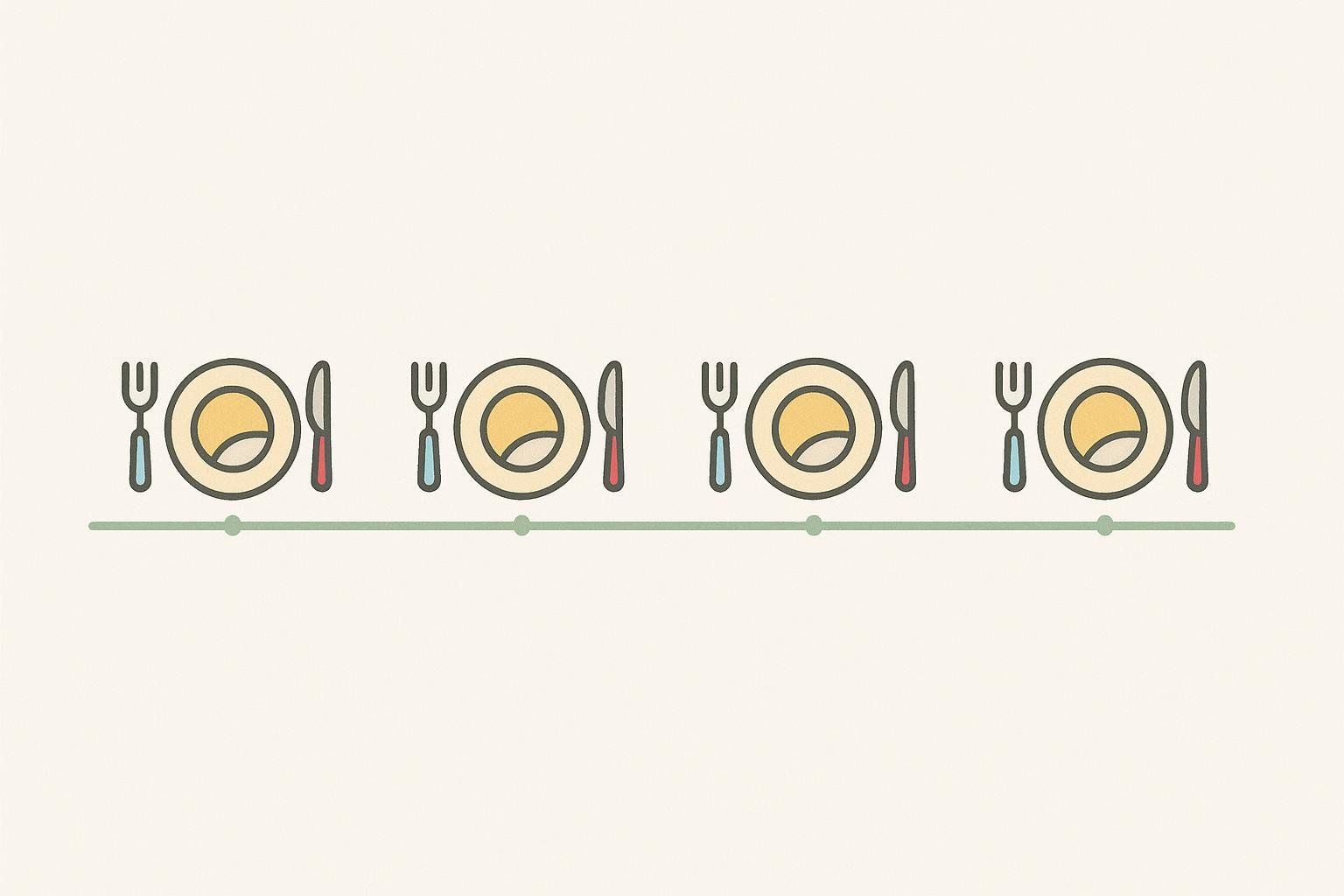
- Smaller, more frequent meals are often easier on digestion and can help you meet calorie needs without triggering flares (see guidance on meal timing from Everyday Health).
5) Add healthy fats for energy density (especially if regaining weight)
- If you’re unintentionally losing weight, blend tolerated, calorie-dense add-ins: olive oil, avocado, smooth nut butters, lactose-free yogurt—smoothies can be a gentle way to eat more without large, heavy meals (as Everyday Health suggests).
6) Support the gut–brain axis
- Stress and anxiety can amplify IBS. Cognitive behavioral therapy, gut-directed hypnotherapy, and relaxation practices can reduce symptom severity (see the Cleveland Clinic’s IBS overview).
- Gentle activity (walking, yoga, strength training) improves motility and stress resilience; regular exercise is part of NHS guidance on IBS self-care.
7) Consider a timed probiotic trial
- Trying a probiotic daily for ~4 weeks is reasonable; if there’s no benefit, stop and reassess. The NHS suggests a one-month probiotic trial to evaluate response. For strain selection and dosing basics, see our Supplements for Digestion: A Science-Backed Guide.
Sample IBS-Friendly Meal Plans
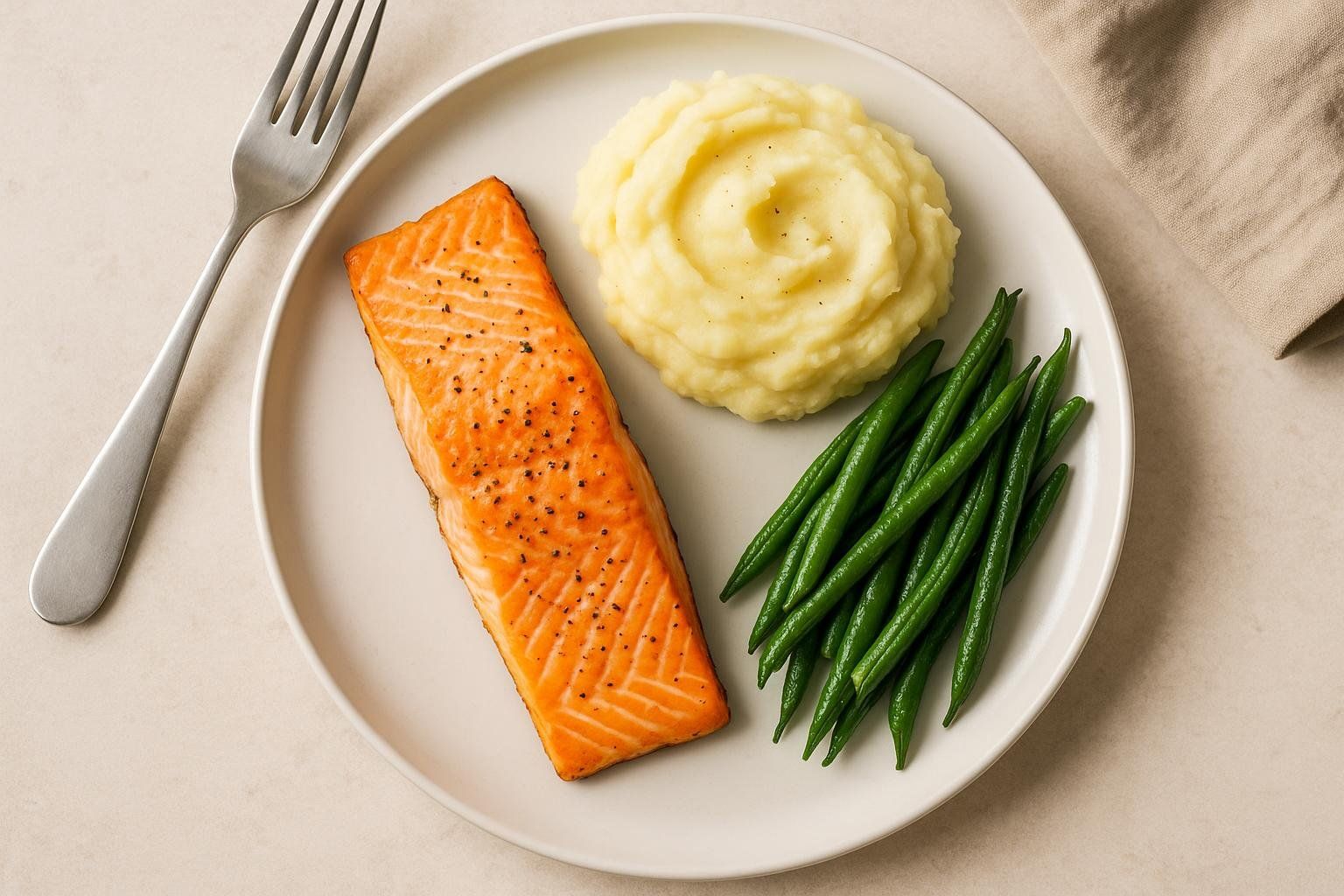
Sample Menu for IBS-D
These examples prioritize low-FODMAP options and gentle cooking methods. Adjust portions to your energy needs.
- Breakfast: Scrambled eggs with spinach (small portion), sourdough toast, blueberries
- Snack: Lactose-free yogurt with 1 tsp chia seeds and a maple drizzle
- Lunch: Grilled chicken, white rice, sautéed carrots and zucchini with olive oil and salt
- Snack: Rice cakes with peanut butter
- Dinner: Baked salmon, mashed potatoes, green beans (small portion)
- Hydration: Water, peppermint tea; consider an oral rehydration solution during frequent diarrhea per clinician advice
Sample Menu for IBS-C
- Breakfast: Oatmeal with lactose-free milk, sliced banana (greenish/firm), and ground flax
- Snack: Hard-boiled eggs and a mandarin
- Lunch: Firm tofu stir-fry with carrots, bok choy, red bell pepper; cooked white rice (or brown rice if you know you tolerate it well)
- Snack: Kiwi and a small handful of walnuts
- Dinner: Turkey meatballs, polenta, sautéed spinach with a drizzle of olive oil
- Hydration: Water throughout the day; brief walk after meals to stimulate motility
Note: Portion sizes matter on a low-FODMAP approach; a dietitian can tailor servings and reintroduction.
Can you lose weight safely with IBS?
Yes—focus on symptom stability, then apply standard weight-loss principles with IBS-friendly foods:
- Modest calorie deficit from tolerable whole foods; limit ultra-processed, high-sugar items that may trigger symptoms (see Verywell Health’s weight loss with IBS guide).
- Prioritize protein at each meal for satiety and muscle preservation (per Verywell Health’s guidance).
- Choose fiber wisely for your subtype (NHS guidance).
- Move more in ways that don’t aggravate symptoms—walks after meals, low-impact cardio, 2–3 weekly strength sessions (NHS guidance on IBS self-care).
If you’re underweight or losing without trying, reverse the calculus: stabilize symptoms, then gently increase calories with tolerated fats and frequent small meals (as Everyday Health recommends).
The IBS–obesity connection: what research says
IBS and higher body weight can coexist. A 2014 review in Gastroenterology & Hepatology found variable, sometimes higher rates of IBS in people with obesity, and some evidence that IBS symptoms may improve after significant weight loss—though research methods and definitions vary and more study is needed. Separately, a 2018 study in Nutrients on a six‑month conservative weight-loss program for people with morbid obesity found that those with IBS reported clinically meaningful reductions in IBS symptom severity. Constipation increased overall in the cohort, underscoring the need for personalized fiber and hydration during weight loss.
Track progress beyond the scale (and why BodySpec helps)

Bathroom scales can’t tell whether you’re losing fat or hard-earned muscle. A DEXA body composition scan shows fat mass, lean mass, and estimates visceral fat—helpful for anyone managing IBS who wants to preserve muscle while adjusting weight. It’s fast, low-radiation, and repeatable.
- Learn why composition beats weight alone: Body Composition vs Weight: What Matters for Your Health
- See how small, smart changes reduce deep abdominal fat: The Impact of Weight Loss on Visceral Fat
- Ready to measure? Here’s how to prep: Prepare for Your BodySpec Scan
Note: BodySpec provides wellness information and non-diagnostic scanning. Always work with your healthcare provider to evaluate red-flag symptoms and medical concerns.
Real-World Scenarios
Scenario: Managing Weight with IBS-D
- Challenge: Frequent diarrhea and fear of eating in public make weight loss feel impossible.
- What helps: Brief low-FODMAP elimination with quick reintroductions, small, frequent meals built around protein and gentle carbs, daily walks and a simple strength routine, and CBT techniques for anxiety.
- Outcome: As flares ease and intake stabilizes, a modest calorie deficit becomes sustainable.
Scenario: The Bloated Athlete (IBS-C)
- Challenge: Constipation and bloating derail training and leave you feeling “puffy,” even though the scale hasn’t moved.
- What helps: Hydration plan plus 1–2 tbsp ground flax/linseeds daily, slow psyllium titration, post‑meal walks, swapping a couple of high‑FODMAP items for tolerated options, and adding short, low‑impact cardio bursts.
- Outcome: Better regularity, improved workouts, and body-fat reduction without obsessing over daily weight.
Scenario: Addressing Unintentional Weight Loss
- Challenge: You’ve unintentionally lost 8 pounds since your IBS diagnosis.
- What helps: Clinician screening for red flags, short-term elimination to identify worst offenders, adding calorie‑dense, tolerated fats (olive oil, avocado, smooth nut butters) to smoothies and sauces, gentle meal windows, and a one‑month probiotic trial.
- Outcome: Symptom stability and gradual weight regain.
FAQs
- Is low-FODMAP forever? No. It’s a short-term diagnostic tool; the goal is to reintroduce and liberalize your diet as much as possible (see the Cleveland Clinic’s IBS overview).
- Which fiber supplement is best? Psyllium (a soluble fiber) is often well tolerated and helpful for both IBS-D and IBS-C when titrated slowly—pair with water and clinician guidance (NHS guidance on IBS self-care).
- How much exercise is “enough” for IBS? Start with regular walks (especially after meals) and build toward standard activity guidelines as tolerated; exercise can improve motility and stress (NHS guidance).
- When should I worry about weight loss? Any unexplained or rapid loss—especially with bleeding, anemia, or night symptoms—warrants prompt medical review (see the ACG’s IBS overview and Johns Hopkins Medicine’s IBS overview).
Bottom line
IBS doesn’t directly cause weight loss, but symptom patterns and food choices can. Stabilize your gut first, then pursue your weight goal with a personalized, low-FODMAP–informed plan that prioritizes protein, the right fibers, gentle movement, and stress support. Watch red flags closely, partner with your clinician, and track progress with objective body-composition data.
Want clearer feedback than a bathroom scale? Book a quick DEXA scan to see your fat, lean mass, and visceral fat trends—and build a plan you can stick to.
